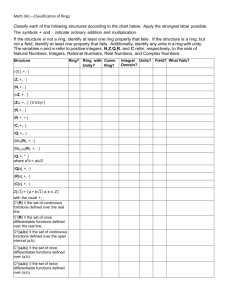Introduction to Probability Game
advertisement
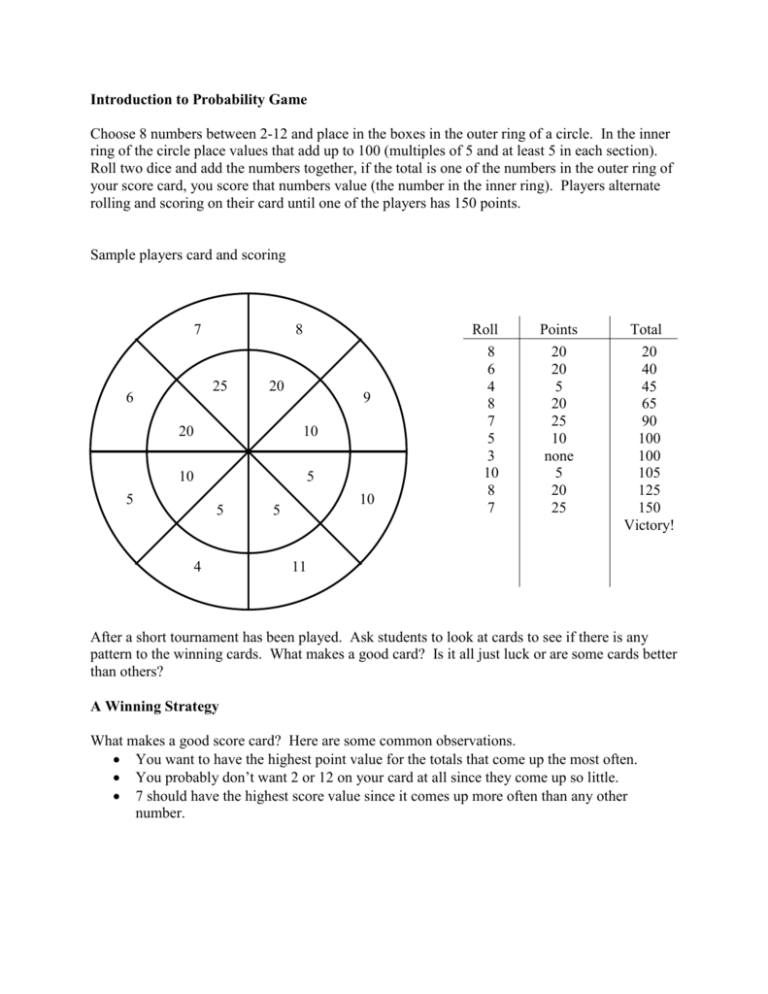
Introduction to Probability Game Choose 8 numbers between 2-12 and place in the boxes in the outer ring of a circle. In the inner ring of the circle place values that add up to 100 (multiples of 5 and at least 5 in each section). Roll two dice and add the numbers together, if the total is one of the numbers in the outer ring of your score card, you score that numbers value (the number in the inner ring). Players alternate rolling and scoring on their card until one of the players has 150 points. Sample players card and scoring 7 8 25 6 20 9 20 10 10 5 5 5 4 10 5 Roll 8 6 4 8 7 5 3 10 8 7 Points 20 20 5 20 25 10 none 5 20 25 Total 20 40 45 65 90 100 100 105 125 150 Victory! 11 After a short tournament has been played. Ask students to look at cards to see if there is any pattern to the winning cards. What makes a good card? Is it all just luck or are some cards better than others? A Winning Strategy What makes a good score card? Here are some common observations. You want to have the highest point value for the totals that come up the most often. You probably don’t want 2 or 12 on your card at all since they come up so little. 7 should have the highest score value since it comes up more often than any other number. Introduction to Probability Game Choose 8 numbers between 2-12 and place in the boxes in the outer ring of a circle. In the inner ring of the circle place values that add up to 100 (multiples of 5 and at least 5 in each section). Roll two dice and add the numbers together, if the total is one of the numbers in the outer ring of your score card, you score that numbers value (the number in the inner ring). Players alternate rolling and scoring on their card until one of the players has 150 points. Score Card 1 Roll Points Total Roll Points Total Score Card 2
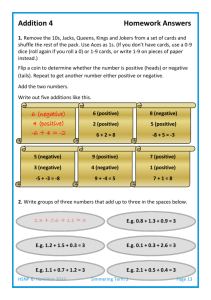
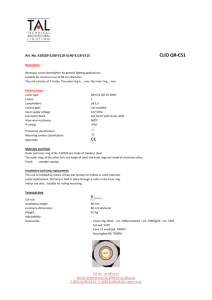




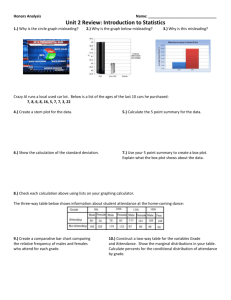


![Read the story [pdf, 15kb]](http://s3.studylib.net/store/data/007120651_2-2865a24f3154f2c5f351d9eea66d52fa-300x300.png)
